TC Energy, the Canadian fossil fuel giant behind the failed Keystone XL project and the controversial Coastal GasLink project in British Columbia, is quietly preparing to expand the capacity of a major fracked gas pipeline in Cascadia.1 Gas Transmission Northwest (GTN), one of two large gas transmission pipelines that run through Oregon and Washington, pushes fracked Canadian gas from Kingsgate, British Columbia, across northern Idaho, eastern Washington, and central Oregon to Malin, Oregon, where it connects to pipelines in California.
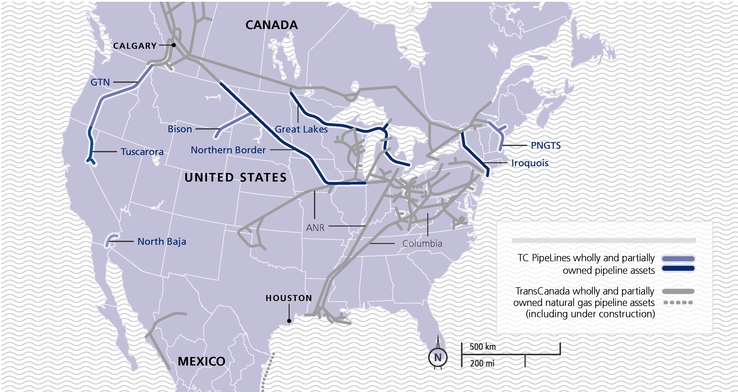
Image from https://www.sec.gov/
The expansion project, dubbed GTN Xpress, would grow GTN’s capacity by 250 million cubic feet per day (cf/d), which is equivalent to roughly a quarter of Washington State’s annual gas consumption.2 TC Energy justified its October 2021 request for federal approval of the project by claiming that it needs more pipeline capacity to “meet increased market demand [for gas]…in the Pacific Northwest.”3 The Federal Energy Regulatory Commission (FERC) will release a draft environmental impact statement on the project in June 2022.
But TC Energy is either not paying close attention to what’s happening in the Pacific Northwest or choosing to ignore it. Oregon and Washington are taking major steps to wean themselves off gas with some of the most ambitious policies in the United States. In that context, TC Energy’s stated rationale for hurtling more methane-spewing fracked gas across Cascadia hardly passes muster. Instead, GTN Xpress is the fossil fuel giant’s latest profit-making scheme—one it hopes no one will notice.
TC Energy is pushing its product on the Pacific Northwest when the region is laying off gas
The future of gas in the Pacific Northwest is dimming rapidly. Washington and Oregon will require 100 percent renewable electricity generation by 2040 and 2045, respectively, meaning that gas will no longer be needed for power generation. Washington recently passed the nation’s first state-level de facto ban on gas in new commercial buildings, with the same policy in new residential buildings likely to follow later this year. And momentum is growing at the local level in cities like Eugene and Milwaukie, Oregon, and Bellingham, Washington, to require building electrification. Eliminating gas usage for electricity generation and residential buildings alone would eliminate about a third of Washington and Oregon’s current gas demand.4
In other words, Cascadia is not crying out for more gas.
In fact, the capacity of the existing GTN pipeline already exceeds the annual gas consumption in Oregon and Washington by almost a factor of two, as shown in the chart below. GTN pumps about 1,000 billion cubic feet per year (bcf/y) across the region, as shown at left. Washington consumes 378 bcf/y and Oregon consumes 302 bcf/y, shown at right.
To be fair, it makes sense that GTN’s capacity exceeds Oregon and Washington’s current gas consumption, since some portion of the gas in GTN flows south to markets in California. But the fact that GTN has more than enough capacity today to meet Oregon and Washington’s gas consumption calls into question TC Energy’s claim that it needs to expand GTN to meet demand in the Pacific Northwest.
Plus, while gas consumption has increased slightly in Washington and Oregon over the past five years, before the states’ ambitious climate policies have taken effect, the same cannot be said for California, where gas demand has declined. Looking at all three states together, the net change in gas consumption from 2015 to 2019 actually declined by 61.52 billion cubic feet per year (bcf/y) as indicated by the right-hand bar below. In that regional context, expanding GTN by 91 bcf/y, shown by the left bar below, should raise eyebrows.
Is TC Energy ignoring the writing on the wall? Not necessarily. According to industry source Natural Gas Intelligence, the pipeline company does not actually think that Northwest gas demand will rise, despite what it told FERC. Instead, TC Energy is seeking to grab market share by pushing more Canadian gas onto the Pacific Northwest, displacing other gas sources.
Either way, GTN Xpress would lock in expanded fossil fuel infrastructure for decades, making it harder for the region to achieve its decarbonization goals. TC Energy has already signed 30-year contracts for the project with gas utilities in the Pacific Northwest and gas extraction companies in Canada, meaning that it intends to ship fracked gas through the region past 2050. In that way, TC Energy expanding the pipeline is like someone opening a smoke shop in your house when you’ve just quit smoking. While you might have every intention of never having another cigarette, having it at your fingertips makes achieving that goal all the more difficult.
The gas pumped through GTN is dirty when extracted, dirty when shipped, and dirty when burned
The gas that would run through GTN Xpress (and that already runs through GTN) is dirty from start to finish. Much of it would be extracted from the prolific fracking fields in northeast British Columbia and Alberta. Fracking has been linked to human health impacts like low birth weights; extensive environmental degradation, including water pollution; and abrogation of First Nation treaty rights. When extracted and transported, gas leaks into the atmosphere, and most of it is methane, a potent greenhouse gas. And when gas is burned, it releases climate-warming carbon dioxide (CO2) and the air pollutant nitrogen dioxide (NO2), which is harmful to human health. Children living in homes with gas stoves face a 42 percent increase in asthma symptoms, according to a 2013 meta-analysis of 41 studies.
If TC Energy fills the expanded capacity of GTN, at least an additional 6 million metric tons of CO2 equivalent (CO2e) would be released into the atmosphere annually, as shown in red in the chart below.5 Six million metric tons of CO2e is more than what any other polluter spews in Washington State, shown in grey below, with the exception of the soon-to-be-retired TransAlta coal power plant in Centralia.
GTN Xpress is part of a broader stealth expansion plan by fossil fuel giant TC Energy
TC Energy trails behind it a noteworthy list of failed attempts to build new fossil fuel infrastructure, perhaps the most famous being the Keystone XL pipeline. The pipeline company is also currently building the controversial Coastal GasLink pipeline in British Columbia to service a new LNG facility. The UN Committee on the Elimination of Racial Discrimination recently called on the Canadian and BC governments to stop construction of the Coastal GasLink pipeline due to their use of force and other mistreatment of members of the Wet’suwet’en First Nation who oppose the project.
Faced with growing public outcry over new fossil fuel infrastructure projects, TC Energy is starting to pursue quiet expansions of its existing extensive footprint. As Natural Gas Intelligence put it, “The stealth growth strategy drops big projects that whip up fossil fuel furor by breaking new ground. Focus switches to decades-old TC pipeline corridors, where markets and regulators accept gradual delivery increases as natural.” Lauren Goldberg, Executive Director of environmental organization Columbia Riverkeeper in Oregon, which was one of the first groups to call out the project, calls this a “creative, though losing, approach” to save a dying industry.
Indeed, TC Energy asserts in its 2021 annual report that “the value of existing infrastructure assets will become more valuable given the challenges to develop new greenfield, linear-energy infrastructure, in particular, pipelines.” The corporation also promotes “in-corridor expansion and extension of our existing significant North American natural gas pipeline footprint” as a priority pillar of its strategy. Beyond GTN Xpress, other notable TC Energy projects in the works include the current billion-dollar expansion of the NGTL and Foothills pipeline systems, which feed into GTN on the Canadian side of the border.
Even as it pursues this quieter growth strategy, TC Energy may still be obscuring the full scope of its intentions with GTN Xpress. Despite publicly stating a plan to expand the pipeline by 250 million cf/d in 2019, the company has only filed a FERC request for a 150 million cf/d expansion. Lawyers from Columbia Riverkeeper and Crag Law Center in Oregon are protesting this piecemeal approach to federal filings, which they believe TC Energy is pursuing to conceal from regulators the true scale of its expansion plans and thus more easily secure regulatory approval.
OR and WA need to “come out swinging”
As Cascadians take a victory lap for defeating most of the fossil fuel export projects of the last decade, a new frontier of this fight is emerging: the creeping expansion of existing oil, gas, and coal infrastructure. TC Energy’s GTN expansion is one such project that would increase fracked Canadian gas shipments across the Pacific Northwest just as Washington and Oregon are implementing policies to reduce the region’s reliance on gas and steeply cut emissions.
While TC Energy is hoping that the public won’t notice its stealth expansion plans, it can’t escape scrutiny so easily. Environmental organizations are encouraging the public and Washington and Oregon policy makers to put pressure on FERC. Goldberg, Executive Director of Columbia Riverkeeper, argues that Governors Jay Inslee and Kate Brown need to “come out swinging against the project to avoid being duped by the fossil fuel industry.” It’s time to see the project for what it is: the latest fossil fuel scheme that pretends to advance Cascadia’s interests but actually pushes a product that our region neither wants nor needs.

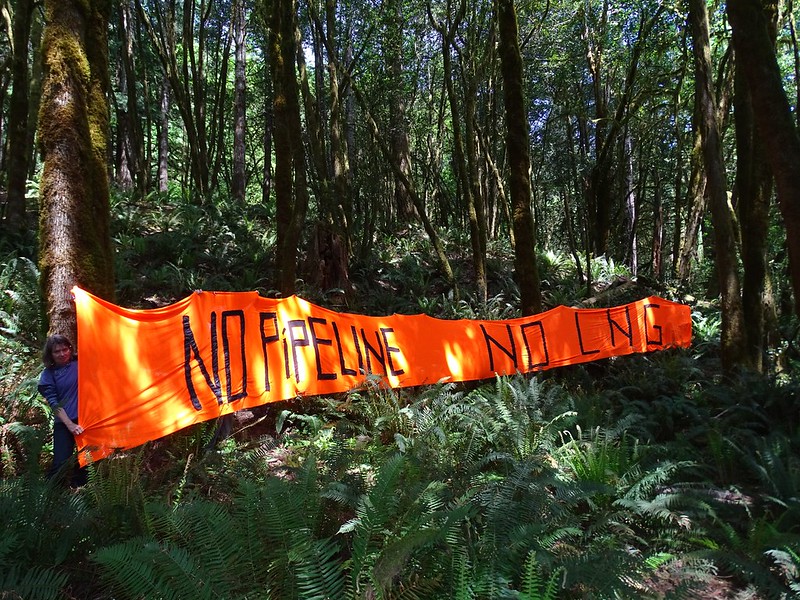
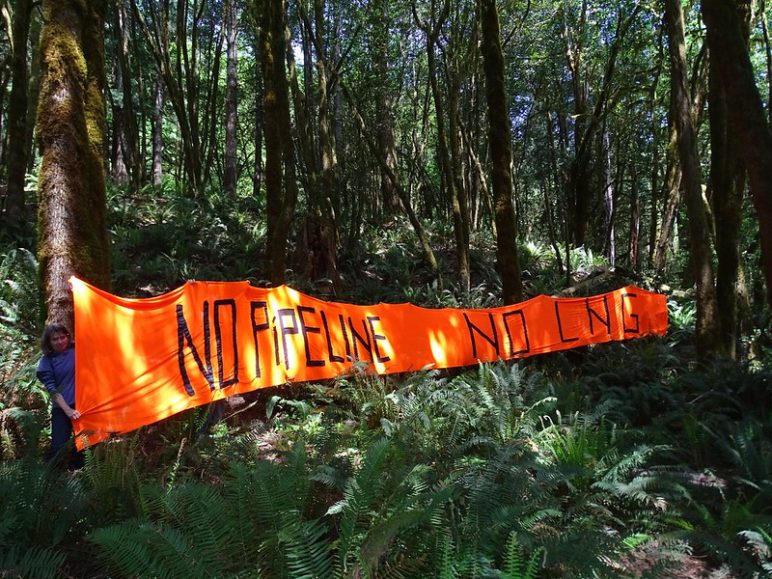

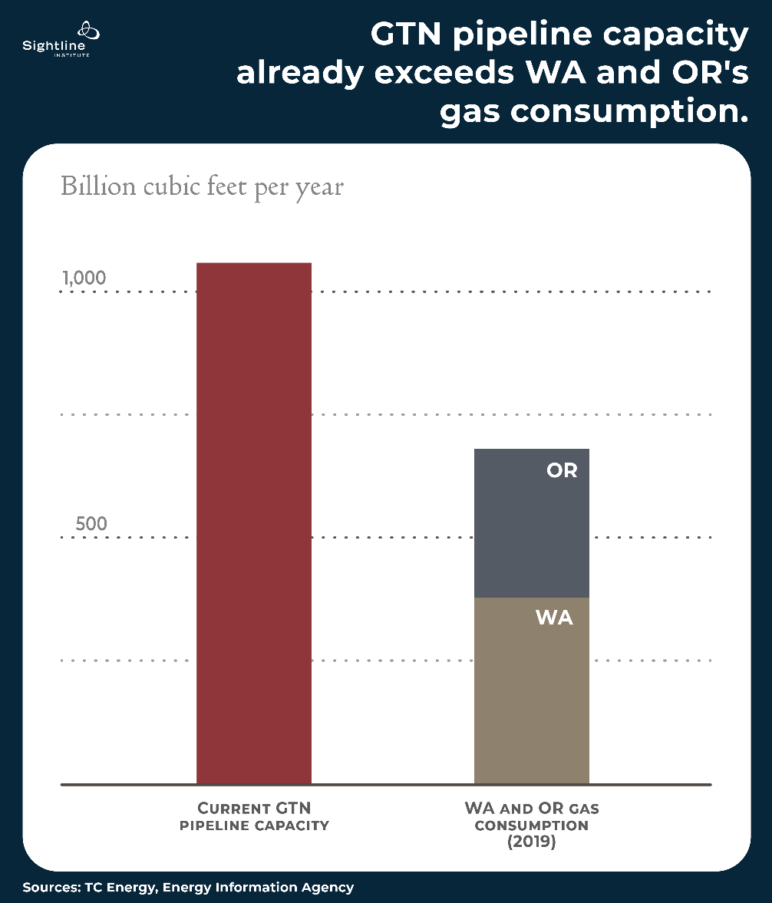
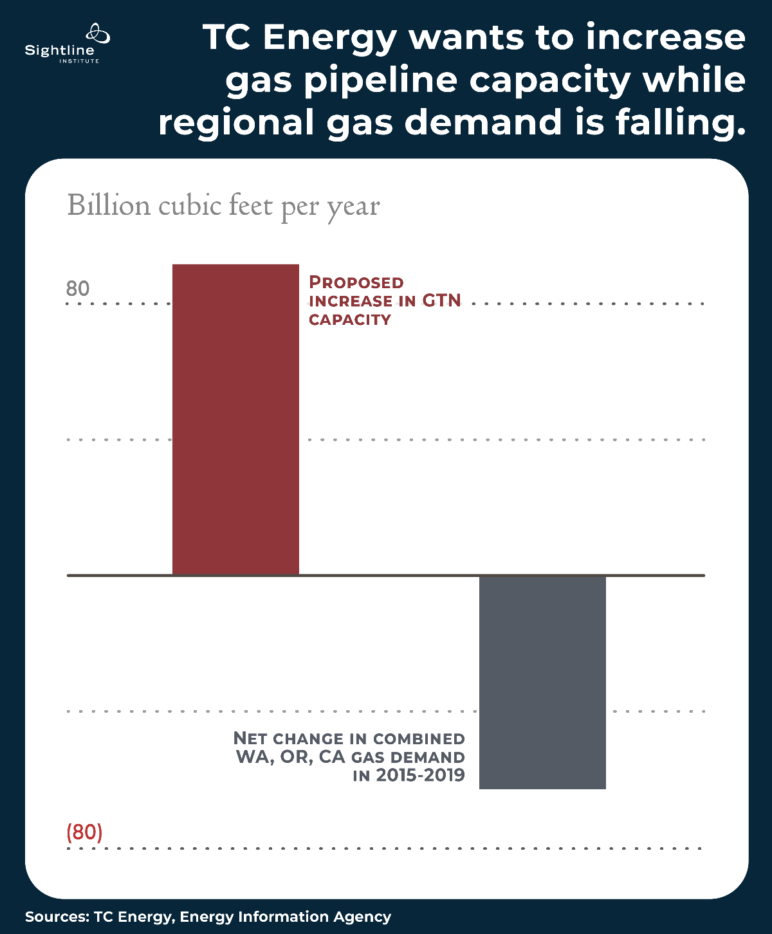
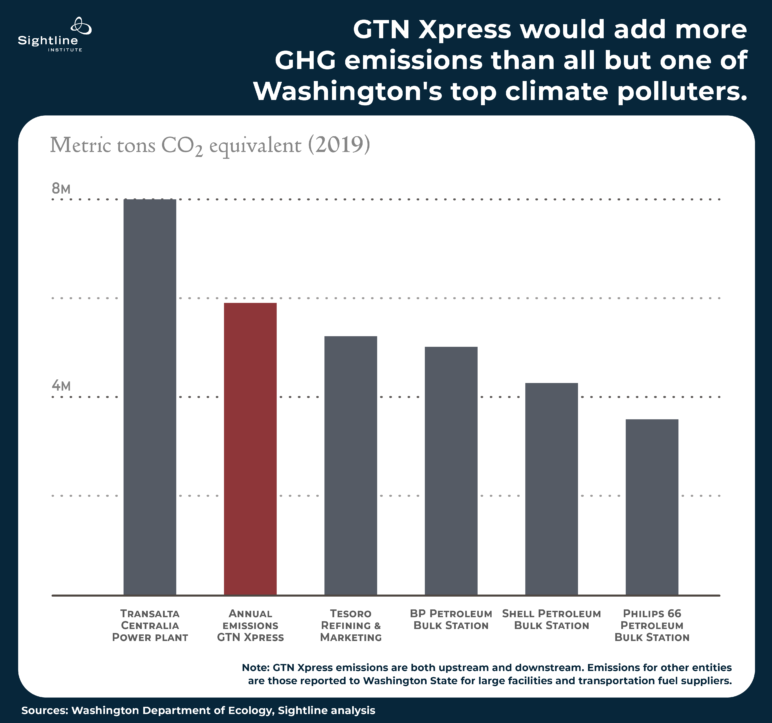






Deb
Hi! Id love to know what we as Washingtonians can specifically do to work against this kind of infrastructure expansion? Should we be writing the governor? Our electeds? Talking to utility governance? What’s the strategy? Thanks!
Lou Berkley
Like every other politician (both parties), the courage of their convictions is always for sale to the highest bidder by way of campaign bribes – oops, I mean “Donations”.
Better to send this article and your letters to the company stockholders, who cherish short-term profits above ALL: whether destroyed lives, resource longevity, or the future of the environment.